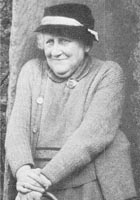This was the view from our hotel room at Whakapapa Village in Tongariro National Park. Mt. Ngauruhoe was Mt. Doom in Lord of the Rings. They filmed quite a lot of the Mount Doom scenes in Lord of the Rings, such as Sam carrying Frodo up the cliffs. It is a conical, single-vent volcano with perfectly symmetrical slopes. Due to rainy weather and approaching storms, the clouds would eventually cover Mt. Ngauruhoe with their hues of pink and golden fingers.
Mount Doom From Lord of the Rings


















































